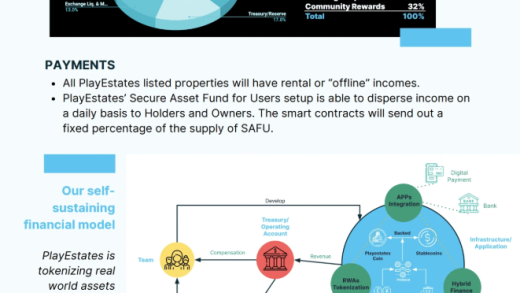Read More《香港稳定币首批玩家出局:中资离场与监管降温》
Positive Comments: Prudent Regulatory Cooling Pours an “Anchor of Safety” into Hong Kong’s Crypto Financial Market
The withdrawal of the first batch of Chinese – funded institutions from the stablecoin and RWA (Real – World Assets) sectors in Hong Kong may seem like a local cooling of market enthusiasm on the surface. In fact, it is a crucial move by the regulatory authorities to pour an “anchor of safety” into the emerging financial field. This adjustment not only conforms to the development logic of “stability first” in Hong Kong as an international financial center but also has far – reaching significance for preventing systemic risks and building a long – term healthy ecosystem.
Firstly, regulatory cooling is a timely correction of the market chaos of “rushing in blindly”. As mentioned in the news, before and after the implementation of the stablecoin regulations, a large number of Chinese – funded banks, securities firms, and internet companies flocked to apply for licenses or layout RWA businesses. There was even an overheated phenomenon of “all institutions canceling public discussions”. This “herd effect” is particularly dangerous in the emerging financial field. As the key link between fiat currency and crypto – assets, the issuance of stablecoins involves complex compliance requirements such as reserve management, anti – money laundering, and user asset protection. Although RWA is regarded as “the future of the integration of crypto – finance and the real economy”, issues such as legal confirmation of rights, asset custody, and secondary – market liquidity in the tokenization process have not been fully resolved. If Chinese – funded institutions enter the market blindly, they may trigger redemption risks and legal disputes due to lack of experience or compliance loopholes. It may even lead to the disorderly inflow of mainland funds into the crypto – market through Hong Kong channels, threatening financial stability. At this time, the mainland regulatory authorities require institutions to “operate low – key and not publicize” through “guidance opinions”, which is essentially pressing the “pause button” on the overheated market to avoid repeating the mistakes of the crypto – market crashes in some regions caused by wild growth.
Secondly, Hong Kong’s “gradual regulatory” model provides a replicable sample for global emerging financial regulation. Since the launch of the cryptocurrency exchange license (VASP) in 2023, Hong Kong has always adhered to the strategy of “pilot first, gradual opening up”: from sandbox testing to the implementation of regulations, from issuing only 1 – 2 licenses in the first batch to subsequent expansion. This “step – by – step” rhythm is also continued in the stablecoin field. After a 1.5 – year sandbox operation of stablecoins, the world’s first comprehensive regulatory framework was officially implemented in August 2025. After 77 institutions submitted application intentions, the first batch of licenses is expected to be issued by the end of this year or early next year, and the participation of Chinese – funded institutions is clearly “isolated from risks”. This prudent attitude not only ensures the integrity of the regulatory framework (such as the clear core requirements of the “Stablecoin Regulations” for 100% reserve coverage, regular audits, and user redemption rights) but also leaves an adaptation period for market players to avoid shocks caused by sudden policy changes. Compared with the long – standing difficulty in enacting stablecoin legislation in the United States and the fact that stablecoins under the European MiCA framework are still in the exploration stage, Hong Kong’s “gradual regulatory” approach is more practical and more in line with the positioning of an international financial center of “controllable risks and orderly innovation”.
Finally, the local cooling reserves policy space for future “precise warming”. As mentioned in the news, local “non – Chinese – funded financial institutions” in Hong Kong are still carrying out crypto – businesses in an orderly manner. There are already thirty to forty projects in the RWA primary – market pilot, and the DAT (Digital Asset Treasury) sector has also begun to sprout (for example, Yunfeng Financial has included ETH in its strategic reserves). This shows that regulatory cooling is not a “total negation” but “classified management”. Chinese – funded institutions are subject to key constraints due to their connection with mainland funds and the compliance responsibilities of their parent companies, while international and local institutions can continue to explore within the compliance framework. This differentiated strategy can not only prevent the linkage risks brought by the “扎堆ing of Chinese – funded institutions” but also maintain the international openness of the Hong Kong market, leaving space for the introduction of more high – quality international capital, technology, and projects in the future. As Chen Derun, the former president of the Hong Kong Monetary Authority, said: “Financial innovation needs a’safety net’, but we should not be over – cautious.” This cooling is essentially laying the foundation for subsequent “precise warming”. After the business models and risk boundaries of stablecoins and RWA become clearer, Chinese – funded institutions still have the opportunity to re – enter the market in a more compliant way.
Negative Comments: Short – term Pains May Affect Hong Kong’s Global Competitiveness in Crypto – Finance
Although regulatory cooling is necessary, the concentrated withdrawal of Chinese – funded institutions and the local cooling of market enthusiasm may also have a negative impact on the short – term development of Hong Kong’s crypto – finance and even weaken its first – mover advantage in global crypto – finance competition.
Firstly, the “exit” of Chinese – funded institutions may cause Hong Kong to miss the window period of “east – bound capital”. Chinese – funded institutions have a natural advantage in connecting the mainland’s real economy with the international crypto – market when laying out stablecoins and RWA in Hong Kong. On the one hand, Chinese – funded banks have rich experience in cross – border settlement of Hong Kong dollars and RMB. If they participate in the issuance of Hong Kong dollar stablecoins, they can improve the practicality of stablecoins in cross – border payments. On the other hand, Chinese – funded securities firms are more familiar with the tokenization of mainland enterprise assets (such as supply – chain finance and intellectual property). If they participate in RWA businesses, they can promote the global tokenization of “Chinese assets” more quickly. However, the current suspension of Chinese – funded institutions from entering the market due to regulatory guidance may put Hong Kong at a disadvantage in the connection of “east – bound capital”. Robinhood in the United States has launched the tokenization of unlisted company equity. Nine European banks have jointly developed a euro stablecoin, and South Korea and Singapore are also accelerating the layout of stablecoins and RWA. If Hong Kong lags behind in related business progress due to the withdrawal of Chinese – funded institutions, it may be preempted by other financial centers in the market share.
Secondly, excessive prudence may suppress innovation vitality and delay the technology implementation process. The core value of stablecoins and RWA lies in improving asset liquidity and reducing transaction costs through blockchain technology. However, technological innovation often requires “room for trial and error”. Although Hong Kong has run the stablecoin sandbox for 1.5 years and the RWA primary – market pilot for 2 years, the withdrawal of Chinese – funded institutions may lead to a lack of diversity in pilot projects. Currently, most of the running RWA projects have a scale of only HK$10 – 20 million and are concentrated in “mature assets” such as US stocks and US bonds. The exploration of tokenization of “characteristic assets” such as accounts receivable and green bonds of mainland enterprises may stagnate due to the departure of Chinese – funded institutions. In addition, the decrease in the number of Chinese – funded institutions applying for stablecoin licenses may also affect the expansion of the application scenarios of Hong Kong dollar stablecoins. Without the participation of Chinese – funded banks, the implementation of Hong Kong dollar stablecoins in areas such as cross – border e – commerce and supply – chain finance may be slower than expected, making it difficult to compete with US dollar stablecoins (such as USDT and USDC) and euro stablecoins (such as the project jointly developed by European banks).
Thirdly, the uncertainty of market expectations may affect investors’ confidence. As mentioned in the news, the withdrawal of Chinese – funded institutions is directly related to the “mainland regulatory guidance”. Although local Hong Kong institutions are not affected, the market’s sensitivity to the “policy direction” has increased significantly. Some international investors may have doubts due to the departure of Chinese – funded institutions: Is Hong Kong’s crypto – finance policy stable enough? Will the differentiated regulation of Chinese – funded and non – Chinese – funded institutions lead to market segmentation? This expected fluctuation may suppress capital inflows, especially venture capital for early – stage projects. Both stablecoins and RWA belong to capital – intensive and long – cycle sectors. If investors are worried that policy changes will lead to a “steep increase in compliance costs” or “restricted business scope” of projects, they may reduce their investment in relevant start – ups, thereby affecting the diversity of Hong Kong’s crypto – finance ecosystem.
Advice for Entrepreneurs: Find “Differentiated Opportunities” in the Balance between Compliance and Innovation
Facing the regulatory adjustment in the stablecoin and RWA sectors in Hong Kong, entrepreneurs need to remain rational. They should respect the regulatory logic and seize market pain points to explore differentiated opportunities within the compliance framework. The following are specific suggestions:
Keep a close eye on regulatory dynamics and clarify “what can and cannot be done”. Hong Kong’s crypto – finance regulation features “gradual opening up”. Entrepreneurs need to closely follow the policy interpretations of the Hong Kong Monetary Authority (such as the standards for issuing stablecoin licenses and the progress of the RWA secondary – market pilot) and the “implicit red lines” of mainland regulation (such as the prohibition of mainland funds from flowing in and restrictions on the on – shore business of Chinese – funded institutions). For example, entrepreneurs with a Chinese – funded background can give priority to cooperating with local or international institutions in Hong Kong to avoid triggering regulatory sensitivities due to the “Chinese – funded label”. Non – Chinese – funded entrepreneurs can take advantage of the policy space to accelerate the layout in areas such as stablecoin issuance (such as the reserve management technology of Hong Kong dollar stablecoins) and the RWA primary market (such as the tokenization of Southeast Asian SMEs’ bonds).
Focus on niche sectors and avoid “homogeneous competition”. Currently, 77 institutions have applied for licenses in the stablecoin sector, and there are thirty to forty projects in the RWA primary market. Entrepreneurs need to avoid the “big and comprehensive” model and turn to vertical fields. For example, in the RWA field, they can explore the tokenization of “niche assets” (such as artworks and carbon credits) or provide technical services for RWA (such as compliance audit tools for asset on – chain and secondary – market liquidity solutions). In the stablecoin field, they can focus on “scenario – based stablecoins” (such as a Hong Kong dollar stablecoin payment plug – in for cross – border e – commerce) or develop blockchain technology for reserve management (such as smart contracts for real – time audits) to improve the transparency and credibility of stablecoins.
Strengthen the dual – wheel drive of “technology – compliance” and build a core barrier. The core risks of stablecoins and RWA lie in compliance (such as reserve management and anti – money laundering) and technical security (such as smart – contract vulnerabilities). Entrepreneurs need to improve both technology R & D and compliance capabilities simultaneously. The technology team needs to master technologies such as zero – knowledge proof and on – chain monitoring to ensure the authenticity and non – tamperability of assets on the chain. The compliance team needs to be familiar with regulatory requirements in multiple regions such as the “Stablecoin Regulations” in Hong Kong, MiCA (EU), and BSA (US) to make early arrangements for cross – border businesses. For example, when developing an RWA project, a “dual – custody” model (on – chain smart contract + off – line licensed custody institution) can be introduced to meet both the requirements of Hong Kong’s regulatory authorities for asset right confirmation and the expectations of international investors for asset security.
Pay attention to “non – Chinese – funded” cooperation and expand international resources. The short – term departure of Chinese – funded institutions provides opportunities for non – Chinese – funded institutions (such as Southeast Asian fintech companies and European digital banks). Entrepreneurs can actively cooperate with these institutions and expand their businesses through their international networks. For example, cooperate with the euro stablecoin project jointly developed by European banks to provide cross – border exchange technology for Hong Kong dollar stablecoins. Or cooperate with US RWA platforms (such as Ondo Finance) to introduce their experience in US bond tokenization and explore the possibility of “RWA of RMB bonds” in combination with Hong Kong’s advantages in offshore RMB.
Attach importance to user education and cultivate market awareness. Stablecoins and RWA are still relatively unfamiliar to ordinary investors. Entrepreneurs need to popularize basic knowledge (such as the reserve mechanism of stablecoins and the underlying assets of RWA) through white papers, community activities, and industry reports to reduce users’ trust costs. For example, for RWA projects, “asset – pool transparency reports” can be regularly released to show information such as the cash flow and ratings of underlying assets. For stablecoins, a “real – time reserve query tool” can be developed to allow users to verify whether the reserves are 100% covered through the blockchain browser.
In short, the “first – batch withdrawers” in the stablecoin and RWA sectors in Hong Kong are both the result of prudent regulation and a signal of the market returning to rationality. Entrepreneurs need to break out of the thinking of “following the trend to enter the market”, take compliance as the bottom line and innovation as the core, and build differentiated advantages in niche fields to seize opportunities in the future “precise warming”.




